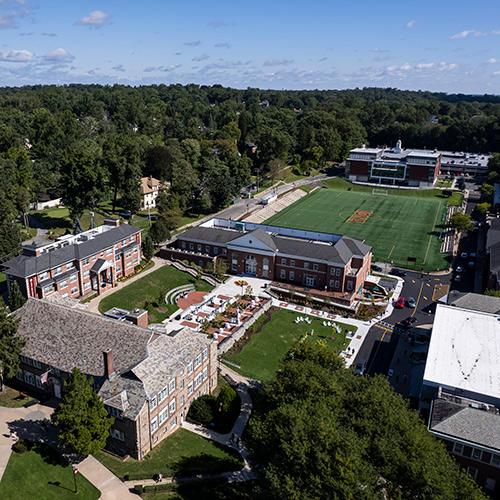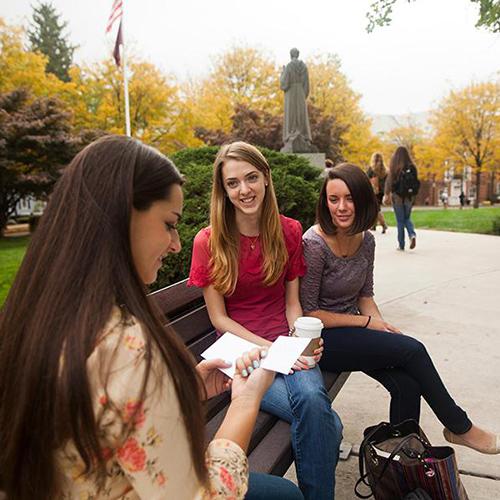How To Become a Spanish Teacher
Why Become a Spanish Teacher?
When you become a Spanish teacher, you are both an educator and an ambassador. Not only do you teach your students new vocabulary words, grammatical rules and other technical elements of a new language, but you also facilitate a cultural exchange and invite them to learn about a world different from their own.
Learning a new language requires students to go back to the basics. By becoming a Spanish teacher, you guide students through this challenging yet rewarding process, while supplying them with valuable communication skills. With a fundamental understanding of Spanish, students can begin to connect with other Spanish speakers beyond the classroom, take an interest in traveling abroad and develop a fuller global perspective.
If you want to introduce students to the Spanish-speaking world and enjoy the mechanics of teaching a second language, then you are an excellent candidate to become a Spanish teacher.
What Does a Spanish Teacher Do?
A Spanish teacher’s primary responsibility is to immerse students in a new language, teaching them how to listen, read, write and speak in Spanish. To get students comfortable with these newly acquired skills, Spanish teachers create interactive lesson plans that engage students’ communication faculties.
Because Spanish teachers work with students who have varying abilities and fluency levels, this requires their curricula and teaching activities to accommodate different learning needs.
In a beginners' Spanish class, teachers teach language basics, like learning the alphabet, numbers, days of the week and essential vocabulary words and phrases.
In AP classes, Spanish teachers may work with students on more nuanced language skills, such as communicating formally and informally, understanding idiomatic expressions, fine-tuning complex grammatical structures and improving oral and written fluency.
Additionally, Spanish teachers provide students with cultural education. There are 20 Spanish-speaking countries, each with a unique culture and history. While it may not be possible to provide a comprehensive overview of each country, students benefit from learning how one language unites many cultures. Incorporating lessons on the geography of Central and South America, socio-political environments, historical figures and other topics give students a fuller understanding of Spanish-speaking cultures.
Spanish teachers are also responsible for general administrative tasks in addition to their instructional responsibilities. They assess and report student progress, provide additional help, meet with parents, supervise students outside the classroom and support extracurricular activities.
Requirements To Become a Spanish Teacher
Earn a Bachelor’s Degree
Like all other teaching careers, every path to becoming a Spanish teacher begins with earning a bachelor’s degree.
Those interested in teaching elementary-level Spanish should seek universities and colleges with an elementary education undergraduate program. These programs offer prospective teachers courses that strengthen their teaching abilities, pedagogical understanding and classroom management skills. Depending on the degree program, students can add endorsements, or subject specializations, to further boost their teaching qualifications. These elementary education programs prepare a direct route to complete state-required educator certifications.
If you want to teach Spanish to middle and high school students, find a secondary education program that suits your educational and professional goals and start the application process. Secondary education programs gear training toward teaching adolescent learners, including lesson planning, instruction and assessment strategies and current education philosophies. It is also common for these degree programs to offer endorsements, such as Spanish, so teachers can specialize their degrees and expand their areas of expertise.
For those who have already earned their bachelor’s degree in Spanish, prospective teachers can enroll in educator preparation programs, which provide students with the required coursework and student-teacher experience needed to secure their teaching license. Educator training programs are offered at colleges and universities in in-person, online or hybrid formats to accommodate the busy schedules of working professionals.
Learn More: Education (BA, BS)
State Certification Process
Once you’ve earned your degree, the next step is to acquire the appropriate state certification.
Certification requirements may change depending on the state, grade level and prior work experience; however, certification candidates typically must:
- hold a bachelor’s degree or higher;
- complete a student teaching experience;
- complete a state-registered preparation program;
- pass required examinations, including a subject-specific exam and state certification examination;
- pass a background check.
To discover what your state’s teaching certification requirements are, visit the U.S. Department of Education’s State Contacts directory to find important contact information for your state’s department of education.
Career Market for Spanish Teachers
When considering the prospect of becoming a Spanish teacher, it is important to evaluate the available employment opportunities.
For middle and high school teachers, the U.S. Bureau of Labor and Statistics (BLS) employment rates are projected to grow four percent through the next decade. This steady growth translates into an estimated 47,300 middle school teaching jobs, while 77,900 high school teaching jobs are predicted to open annually.
The earning potential for secondary teachers is also stable. The annual median salary for middle school teachers is $61,320. For high school teachers, the median salary is $61,820.
Necessary Skills for Spanish Teachers
As educators, Spanish teachers must possess strong communication and interpersonal skills, such as patience and empathy, to ensure they connect with their students in English and Spanish.
Learning a new language is a communication reset, which presents a challenge for many students. It requires them to go back to the beginning and learn simple but unfamiliar concepts like a new alphabet or how to count to 10. To help students acclimatize to a second language and begin reading, writing, speaking and listening, Spanish teachers must create a welcoming and creative environment in which students are comfortable and feel empowered to try out their new skills and make mistakes along the way.
Like other educators, Spanish teachers should have strong organizational and time management skills to maintain an orderly classroom that prioritizes students’ academic success.
These skills also help teachers to keep track of student records and lesson plans and manage their workload.
Obtain Your Master’s in Teaching
Earning your master’s degree in teaching is not required to become a Spanish teacher; however, some states do eventually require teachers to obtain a graduate degree. For example, in New York, teachers must have a master’s degree to continue teaching after the first five years.
A master’s in teaching can also benefit your individual goals. Not only will it advance your professional and pedagogical development, but if you are interested in taking on higher-level administrative positions, then getting a master’s degree can help boost your marketability and earning potential.
Iona University’s Master of Science in Teaching Program
For those interested in pursuing a graduate degree in education, Iona University has a Master of Science in Teaching (MST) degree program. Our MST allows students to learn the pedagogical skills and training they need to thrive and inspire their students.
The master’s in teaching program offers four tracks to tailor your degree to your professional goals, including:
- Adolescent Education (Biology, English, Mathematics, Social Studies, or Spanish)
- Childhood Education
- Childhood and Special Education
- Childhood and Early Childhood Education
If you are interested in becoming a high school Spanish teacher, the Adolescent Education track prepares you to teach grades 7 through 12. You receive comprehensive training in instruction and assessment strategies, multimedia in teaching, special education foundations and more.
Our MST degree program fulfills the New York State Education Department’s certification regulations, the National Council of Accreditation for Teacher Education (NCATE) standards and the National Science Teachers Association (NSTA) standards. This also ensures that once students have completed their degree, they are ready to take the New York State Teacher's Certification Examinations (NYSTCE) and obtain their licensure.
Start Teaching New Spanish Speakers
Spanish teachers equip students with the diverse skill set they need to learn a second language, empowering them to become stronger communicators and better global citizens.
In Iona’s Master of Science in Teaching program, students receive top-tier experiential learning and hands-on practicum they need to excel as educators and begin inspiring a new generation of Spanish speakers.
To learn more about attending graduate school at Iona, visit Graduate Admissions.







